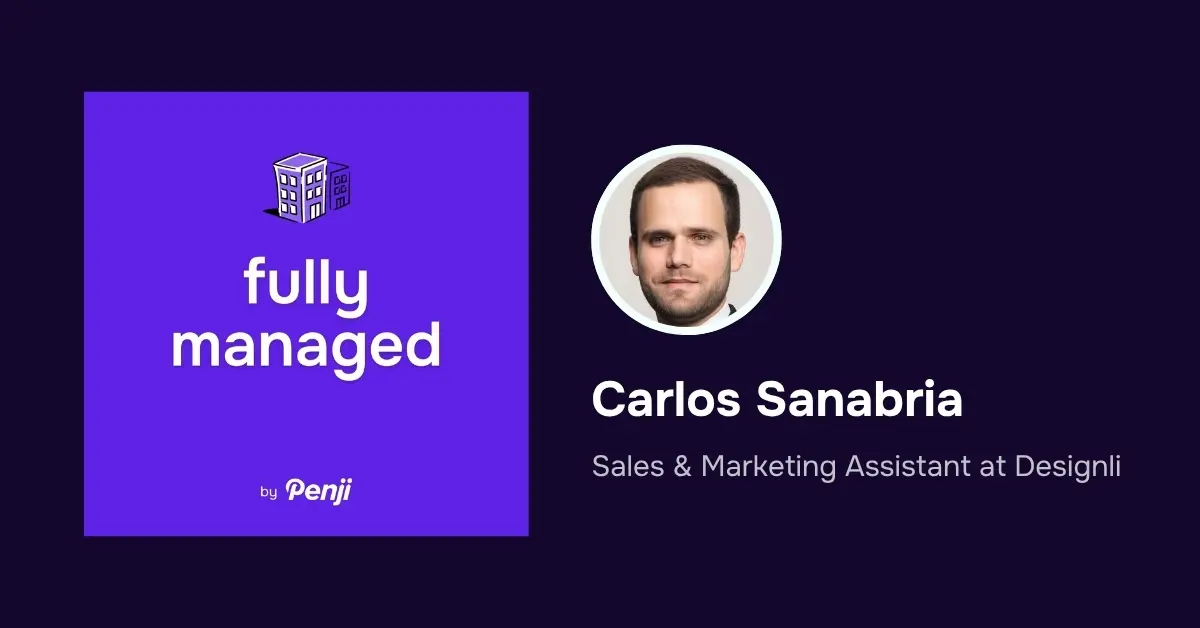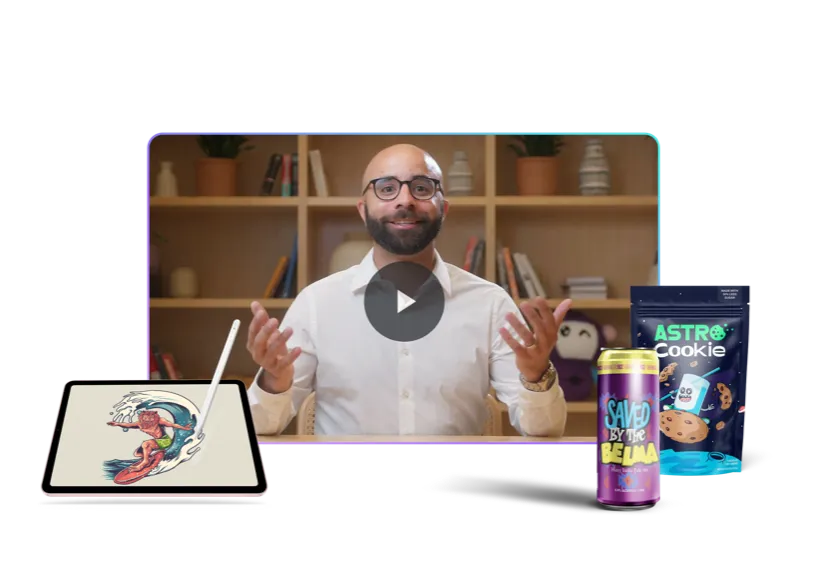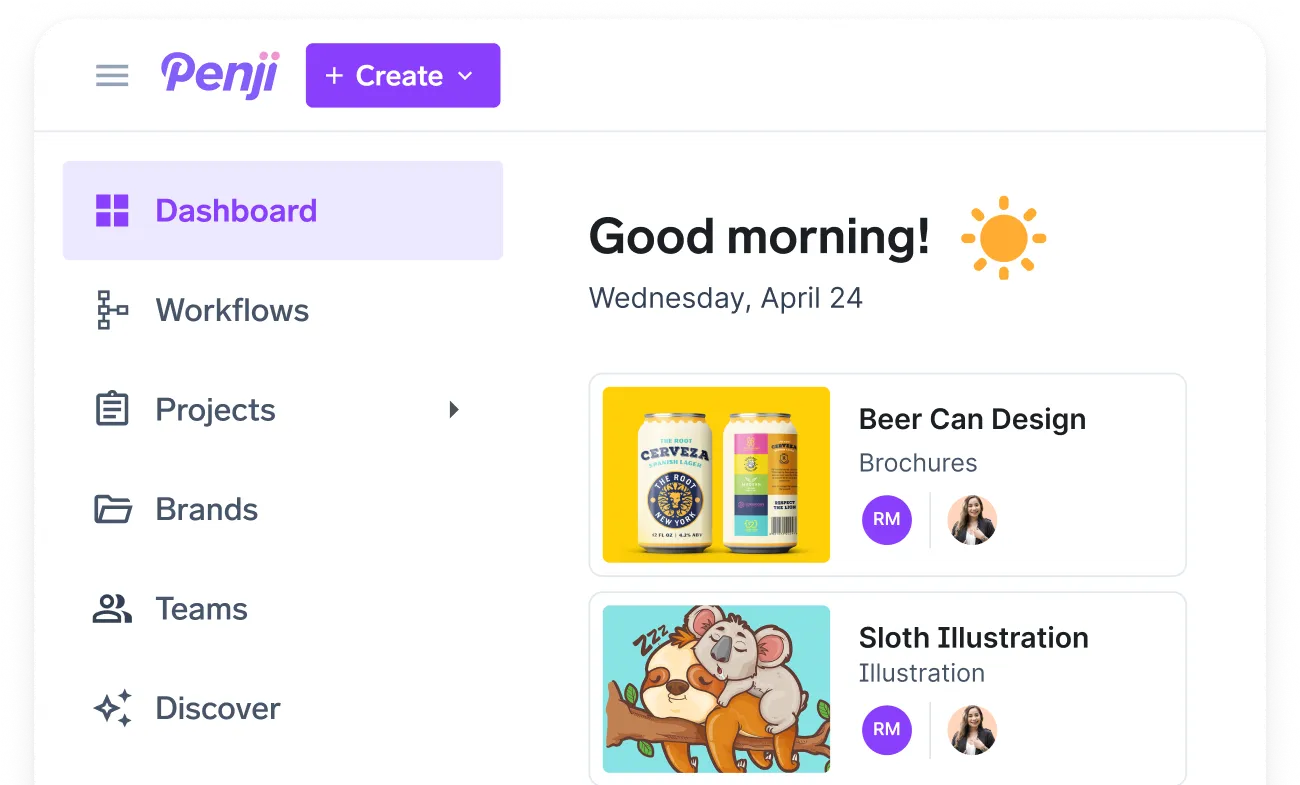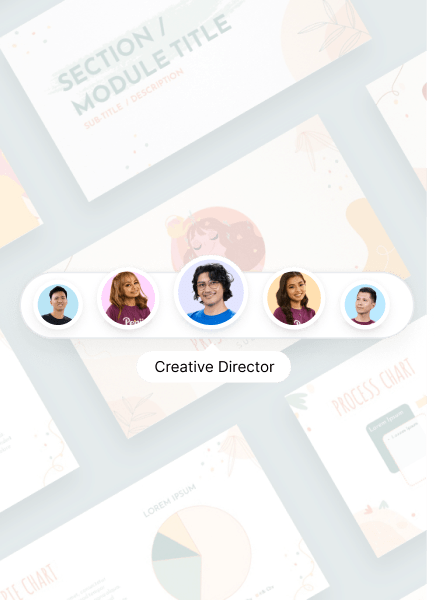
Podcast Introduction
Shannon Penge (SP): Alrighty. Hello everyone and welcome to the Fully Managed Podcast, the podcast where we discuss marketing and business tips to help assist you on your business journey. I’m your host, Shannon Penge, Penji’s partnership coordinator, and I’m joined here today with a very special guest, Carlos Sanabria from Designly. Thank you so much for joining me.
Carlos Sanabria (CS): Thank you for the invitation, Shannon. Thank you.
Carlos’s Professional Journey
SP: Could you please start by introducing yourself? I know I just did, but you might do it even better, and tell us a little bit about yourself and kind of how you got to this point in your professional career.
CS: Yeah, of course. So yeah, as Shannon said, my name is Carlos. I graduated from Purdue University with a degree in marketing and finance back in December, just pre-pandemic, right? So I was part of the people that got lucky enough that a couple months away from being an online student, which was interesting, everything that went about after that. But yeah, after that I came back to Venezuela and I started working in an insurance company. I did some asset underwriting using my finance degree. And yeah. Asset underwriting in Latin America is complicated. It’s a very complex field. It’s not necessarily that lucrative, right? And all of these opportunities, like marketing and sales, started looking for international employees. And the opportunities were significantly better than the corporate positions that were available in my country. So I started looking into marketing and sales, right? And I landed on my first marketing job in a Condor agency, which is a very, very impressive company. They’ve achieved a lot with a fully remote team. Some of our team was in Venezuela. Some of them were in Mexico, and yeah, I went on board there as an account executive and I was in charge of managing two clients. I was in charge of managing TierPoint, which is a technology firm, a cloud computing firm that provided solutions to companies, very large companies like CVS or Tommy Bahamas, a very, very large company. And we manage all the paid media, all the email marketing, website design, everything. And this was a Fortune 500 company. So it’s a very interesting thing to see how these companies were looking for services that weren’t necessarily in the US and that here in these countries we have highly talented people that can actually tackle and understand US business and interpret all the data that was coming in and providing accurate solutions. That was with TierPoint, right? And the other client I handled was Ramsey Innovations, which was with their founder, Tom Morris. Jim Morris, sorry. He’s an incredible businessman, and I learned a lot from them. And well, as you probably know, the agency life is very demanding, right? It’s client facing, so you need to, yeah, there was a typo in the email or the budget from the paid campaign is not what we expected, or all these day-to-day, yeah, day-to-day altercations that could put you on your feet, right, basically. So yeah, I learned a lot from all of them.
Adapting to Challenges
SP: And I also think that it’s really important for people to sometimes get out of a specific space to be able to learn in a different way. So what do you think is the most helpful that contributed to you being better at marketing and sales from doing the piano?
CS: Yeah, so just to give you a little bit of context, the piano bar itself was, or is, right, a bar where people walk in and they basically ask you to play a song and they sing it, right? So it’s like a live karaoke, basically. So that was one part. And then the other one was thinking on your feet. But you obviously have to navigate that situation and pivot to be able to reorient what your plan is in order to be successful.
SP: Yeah, I feel like that’s the very important part that you need to adapt, because you can get yourself out of the way, right? Because if you came up with this amazing campaign and you integrated a bunch of platforms, and it doesn’t work, then it just doesn’t work.
Designly’s Marketing Strategy
SP: So how do you ensure that Designly’s marketing messages resonate with the specific needs of your potential clients?
CS: Well, I’m going to talk, since I’m more in the sales part, right, in Designly, I’m going to tell you the approach I’ve been taking towards communicating with the right people at the right time and providing the right message in my position, right? So when I first came in, I started seeing the buyer personas or the ICPs that the company had and they weren’t necessarily based on past deals, right? So I, I’m a believer right that we need to make decisions on evidence, right? And do a little speculation, little experiments, do A/B testing, to confirm your speculations, right? But the evidence in the past is equally important as what you plan for the future or what you think is going to happen. So when I came in, I downloaded all the deals from all the company’s history and basically saw the demographics from all of those deals and see, okay, this person has this position, this person belongs to this industry, this person isn’t from an SMB or an enterprise or exactly. Just building the demographic at the beginning. And I think that that’s the core of the whole strategy is to build an ideal client profile, customer profile. And that’s targeting the first part, which is talking to the right people. Then at the right time, basically there’s a lot of information on the internet. You can basically see, okay, what companies use the technologies that we use, what companies are have a high buying intent using tools such as Bombora, which they’re integrated into tools like Apollo, right? So you know what companies are looking for your website. You know when they visited your website. You know all of this information. Right. So you need to just focus on the people that have that time sensitivity that they’re looking for your product. They’re looking for your service specifically at this time. Right. So then you have the right person, right time, and then the right message. The right message would be, I think it’s incredible. Right. And 2025 is going to get even more AI heavy. Right.
Incorporating Feedback into Sales
SP: So for sure. How is there a way that you incorporate feedback into your sales strategies from past clients?
CS: Yeah. So as I said, I’m pretty new in this actual position. So I haven’t been able to change an approach towards communications or make a fundamental change in our strategy based on what a current client says. But I’ve been able to change or to adapt to results within the campaigns that I manage. So depending on the outcomes or the open rates or the delivery rates or click rates in a certain campaign with different touches and different settings, yeah, basically like an A/B testing. That’s how we’ve managed to adapt in different ways.
SP: Oh, okay. Okay. I just wanted to know if there was anything differently that you do that you think stands out for adapting to different feedback from previous customers. Is this strategy that makes a lot of sense?
CS: Yeah. Well, our inbound sales account executive, he’s very good at maintaining those relationships and yeah, basically getting that feedback and adapting the, well, you know, actually he adapted, we, what we usually do is that we offer like this solution package for two weeks where for a fraction of the total development cost, these companies can create like an initial idea of their product, right? And then go to development. So we added an additional step before that two-week process to provide value to the people, right? Because we were seeing some people weren’t necessarily hooked in those two weeks. So we added an additional step at the beginning to get them a little bit more value before they went onto the full development process. So that’s something that happened a couple of days ago.
SP: Oh, wow. Okay. I think that’s a great strategy. I think that sometimes people just need like a little more, like a little more push, I guess, in order to get to finalizing that. So it’s good to incorporate that strategy.
The Challenge of Consistency
SP: Yeah. So my last question for you, because we’re coming up on time, but could you tell us what do you think is the biggest challenge that you faced in your positions is starting and how either if it’s still a challenge, like your plan for overcoming them or adapting to that or anything that you think would be important to mention?
CS: Yes, of course. I think the greatest challenge that I faced and I’m still facing is consistency, right? Because we are in a society that favors immediacy and we want to see results right away, right? And marketing and sales is a strategy-driven industry. And we are the people that are in charge of coming up with strategies, coming up with workflows, with sequences, with audiences, and we need to have some creativity and speculation to create an initial idea. So I guess that having patience, right? And consistency to actually, I mean, you could build a strategy for some weeks and you create the workflow, you buy the tools, you create the personas, you create the email copies, you create everything. But it all comes down to sitting down, sending the emails, making the calls and just reaching out. You know, and that’s, and that’s when you get the results, when you sit six months from the initial campaign and see if everything worked. So I think that we’re not configured to be patient just with the environment that we grew up in, right? But that’s definitely where the key is.
Handling Unforeseen Results
SP: What? Okay, no, I promised that was the last question. If you experience a challenge during this process, how do you kind of adapt to that? I know I asked about challenges initially, but I guess like, you know, it’s a long process to see the results of marketing, what happens if you’re not seeing what, or sales specifically as well? What happens if you’re not seeing those results?
CS: Well, you need to be humble, right? And just accept that, get yourself out of the way and say like, okay, so this came from my mind. So I’m obviously going to be, yeah, personal about it. It’s going to hurt a little bit. Like, okay, I created all this strategy and I thought this was going to work out, but it didn’t. So you just need to get yourself out of the way, be open to listening to your teammates, to your team and just try other things. It’s definitely an industry where we need to try, we need to experiment and experimentation obviously comes with failure and if you don’t embrace it, you’re not going to be able to get the maximum profit, right? Because you’re not going to be able to try out as many things as possible, find out what works.
Conclusion
SP: Well, I think that is really great advice to end on. So I appreciate it. And thank you so much for joining me today. I think we got a lot of really good advice from you and I learned a lot. So I really appreciate that. And yeah, thank you again.
CS: Thank you, Shannon. It was a pleasure to be here. Thank you.
SP: And thank you everyone for watching and or listening. Don’t forget to like and subscribe to learn more like I get to do. And thank you for joining us.














